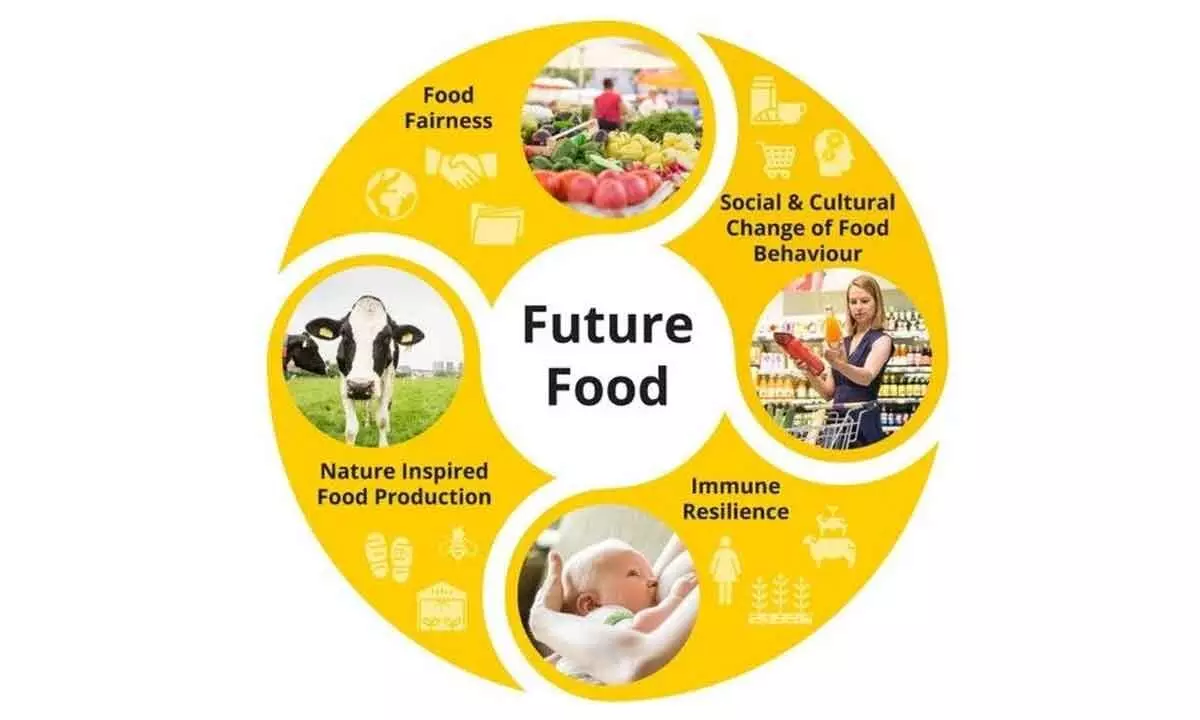The world has to reckon with many food challenges in the future
Large migration by urban-inclined males has led to ‘feminization’ of farming in many countries
image for illustrative purpose

High-input, resource-intensive farming systems, which have caused massive deforestation, water scarcities, soil depletion and high levels of greenhouse gas emissions, cannot deliver sustainable food and agricultural production
ASEAN-India has vowed to increase efforts towards sustaining food chain supplies amid disruptions. The world’s population is expected to grow to almost 10 billion by 2050, thereby boosting agricultural demand.
A decline in the share of agriculture in total production and employment at varying poses different challenges across regions. Although agricultural investments and technological innovations are boosting productivity, growth of yields has slowed to rates that are too low for comfort. Food losses and waste claim a significant proportion of agricultural output, and reducing them would lessen the need for production increases. However, the needed acceleration in productivity growth is hampered by the degradation of natural resources, loss of biodiversity, and spread of trans-boundary pests and diseases of plants and animals, some of which are becoming resistant to antimicrobials.
Hunger and extreme poverty have been reduced globally since the 1990s. Yet, around 700 million people, most of them living in rural areas, are still extremely poor today. In addition, despite undeniable progress in reducing rates of undernourishment and improving levels of nutrition and health, almost 800 million people are chronically hungry and two billion suffer micronutrient deficiencies.
Under a ‘business-as-usual’ scenario, without additional efforts to promote pro-poor development, some 653 million people would still be undernourished in 2030. Even where poverty has been reduced, pervasive inequalities remain, hindering poverty eradication.
Critical parts of food systems are becoming more capital-intensive, vertically integrated and concentrated in fewer hands. This is happening from input provisioning to food distribution. Small scale producers and landless households are the first to lose out. They will seek employment opportunities outside of agriculture.
This is driving increased migratory flows, especially of male members of rural households, which is leading, in turn, to the ‘feminization’ of farming in many parts of the world.
Conflicts, crises and natural disasters are increasing in numbers and intensity. They reduce food availability, disrupt access to food and health care, and undermine social protection systems, pushing many affected people back into poverty and hunger, fuelling distress migration and increasing the need for humanitarian aid. Violent conflict also frequently characterizes protracted crises. On average, the proportion of undernourished people living in low-income countries with a protracted crisis is between 2.5 and three times higher than in other low-income countries.
These trends pose a series of challenges to food and agriculture. High-input, resource-intensive farming systems, which have caused massive deforestation, water scarcities, soil depletion and high levels of greenhouse gas emissions, cannot deliver sustainable food and agricultural production. In the given situation there is a compelling need for innovative systems that protect and enhance the natural resource base, while increasing productivity and a transformative process towards ‘holistic’ approaches. These include agro-ecology, agro-forestry, climate-smart agriculture and conservation agriculture, which also build upon indigenous and traditional knowledge. Technological improvements, along with drastic cuts in economy-wide and agricultural fossil fuel use, would help address climate change and the intensification of natural hazards, which affect all ecosystems and every aspect of human life. Greater international collaboration is needed to prevent emerging trans-boundary agriculture and food system threats, such as pests and diseases.
Eradicating extreme poverty and ensuring that vulnerable people, who escape poverty, do not fall back into it, requires action to reduce inequalities.
That means addressing inequalities both between and within countries, in levels of income, in opportunities and in ownership of assets, including land. Pro-poor growth strategies, which ensure that the weakest participate in the benefits of market integration and investment in agriculture, would improve their income and investment opportunities in rural areas and address the root causes of migration.
But pro-poor growth must go beyond agriculture, by involving both rural and urban areas and supporting job creation and income diversification.
Social protection combined with pro-poor growth will help meet the challenge of ending hunger and addressing the triple burden of malnutrition by way of healthier diets. Permanently eliminating hunger, malnutrition and extreme poverty also requires building resilience to protracted crises, disasters and conflicts, and preventing conflicts by promoting inclusive and equitable global development.
A rethinking of food systems and governance is essential for meeting current and future challenges.
Vertically coordinated, more organized food systems offer standardized food for urban areas and formal employment opportunities. But they need to be accompanied by responsible investments and concern for smallholder livelihoods, the environmental footprint of lengthening food supply chains, and impacts on biodiversity. These concerns ought to be addressed by making food systems more efficient, inclusive and resilient.

